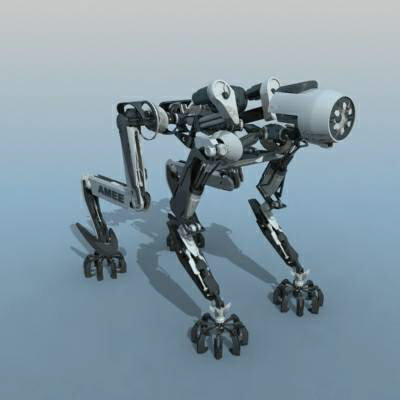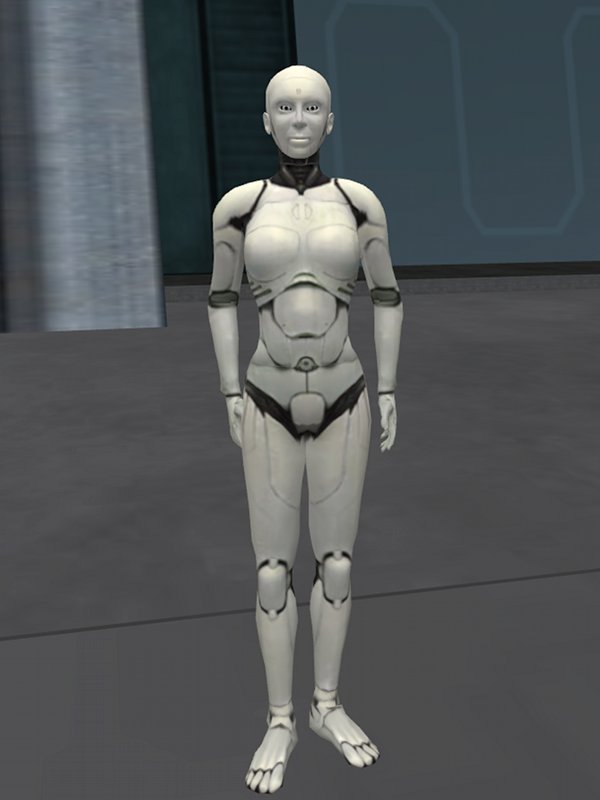Table of Contents
 Although robotics technology is commonly associated with AI (Artificial Intelligence), the creation of mobile and dextrous machines predates effective AI by decades. The military, directly or indirectly, has often been a driving force behind robotics development.
Although robotics technology is commonly associated with AI (Artificial Intelligence), the creation of mobile and dextrous machines predates effective AI by decades. The military, directly or indirectly, has often been a driving force behind robotics development.
Robotic Vehicles
Automated vehicles can be remotely controlled or be self-guided with varying degrees of autonomy. The use of UAVs (unmanned aerial vehicles) is now commonplace, and most cars are capable of driving themselves. Smart cars are not truly intelligent, but they have specialized AI functions allowing them to navigate safely from point A to point B so efficiently that it's now illegal to manually drive on the highways in some jurisdictions. The same technology has been applied to skycars, making them practically as easy to pilot as ground cars.
Humanoid Robots
 Robots take many forms, but some of the most versatile and widely used are humanoid. These robots can ride in vehicles made for recoms, use tools designed for recoms, and function in the same work environments. This means that any kind of new business or project can be started without having to source specialized robots for it. In established industries, however, specialized non-humanoid robots often prove more efficient.
Robots take many forms, but some of the most versatile and widely used are humanoid. These robots can ride in vehicles made for recoms, use tools designed for recoms, and function in the same work environments. This means that any kind of new business or project can be started without having to source specialized robots for it. In established industries, however, specialized non-humanoid robots often prove more efficient.
Because the currently available AI cores are so large and require so much support infrastructure, it's impossible to make a humanoid robot with its own self-contained intelligence. (However, this was possible and was done before the Apocalypse War using nanotechnology-based AI cores!) Most humanoid robots contain processors with basic sensor and motor functions, allowing them to stand, walk, grasp objects, etc. More sophisticated direction has to come from a remote source, which can be either an AI or a recom working through telepresence.
Humanoid robots usually have a more or less attractive human-like body shape and face. They are rarely made with recom-like muzzles, tails or fur. More often their bodies are encased in tough plastic panels. More expensive bots will usually have a thin layer of rubbery synthetic skin stretched over those panels, with a sensor mesh enabling a more effective sense of touch. More expensive bots also tend to have more flexible faces, with expressions approximating those of humans. Many of them are androgynous in build, although robots with feminine or masculine builds also exist.
Some more specific examples of humanoid product categories include:
Utility: This category includes slower and less dextrous models which may not even be capable of facial expressions. These are the least expensive type, used for mundane jobs that do not require interacting with the public. The janitor in your place of work may be one of these. These are always androgynous in form.
Utility Clerk: This is similar to the utility robot, but upgraded with slightly more refined appearance and the ability to form a limited number of facial expressions. The cashier at the convenience store is likely one of these.
Premium Clerk: This is an improved model that can move faster and more flexibly, has better sensor coverage, and can produce a wide range of facial expressions. This model may be a sales assistant at an upscale department store, or a receptionist for a successful executive – or it may even be the avatar of an executive AI. This type often has a somewhat feminine form.
Ruggedized: This is a larger, more heavy-duty robot with greater strength and endurance, and with more durable – and easily replaced – hand and foot pads. They are also usually better sealed against dust and moisture and can tolerate wider temperature extremes. What it gains in brawn, it gives up in sensitivity and expressiveness. Ruggedized models are often referred to casually as “he” and “him”, for obvious reasons. This type of robot is heavily used in construction and agriculture.
Appearance
Most robots are easily recognizable as robots. To make a humanoid robot pass as a living recom would require a considerable amount of custom work to create a believable tail, muzzle, ears and fur, and to create a completely normal-sounding voice, movements, etc. Making a robot pass as a recom when seen from a distance is merely expensive. Making one pass as a recom with close inspection and face-to-face interaction is nearly impossible – although if you watch cheesy spy movies or sci-fi TV shows, you might get the impression that it happens all the time.
It's relatively uncommon for service robots to wear clothing. (Some recoms find it a bit awkward or unsettling when mere machines wear clothes “like a real person”.) Corporations will usually paint their robots in the company colors (for example, brown for UPS) and put their corporate logo in a prominent location, such as the shoulder or breast. However, there's nothing to prevent robots from wearing protective clothing when necessary, as well as tool belts or vests with pockets.
Remote Operation
All of these robots are controlled remotely via “telepresence”. The robot can only go to places where it has some kind of data link! Most of our planets, moons, spaceships and space stations have wireless cellular networks which allow the robots to wander freely. However. . . It's always possible for a robot to wander into a place where the signal drops out. If this happens, the robot may be programmed to become idle until the connection is restored, or it may be programmed to wander about in search of a signal so that it can re-connect to its controller. The connection is also limited in distance. Because of time delay, it's impractical to control a robot over interplanetary distances. (Even the time lag between Earth and Luna is 1.28 second, which is enough to make control quite difficult and frustrating.)
It's also important to note that the controller does not have to be an AI core! It is also possible for a recom to take control over a robot and use the bot as a “surrogate”. Robots can be used in environments where it would be dangerous for a recom to work. They can be used for telecommuting. They can also be used to commit actions anonymously – which has resulted in some use by criminals, and also some efforts by law enforcement to register or track robots electronically. Recoms do not have direct neural interfaces at this time. To control a bot you have to work through some kind of physical interface. A virtual reality type of interface with goggles and data gloves is preferred, but a common computer interface (monitor, keyboard, etc.) can be used in a pinch. It does take practice and is a skill most recoms develop only if needed for their profession.
Power Source
Most robots – particularly humanoid ones – are powered by batacitor power cells which must be recharged regularly from the power grid. Most humanoid robots can get through a typical day's work, or maybe two, on a charge. Exertion will drain the cells more quickly, possibly requiring a mid-day recharge. Charging from a standard wall outlet takes several hours and is usually done overnight, but many workplaces that use robots have specialized high-voltage stations that can charge up a bot in 15 minutes.
Batacitor cells are designed for safety. However. . . If they are physically crushed or punctured, they can release their energy in a very startling and somewhat dangerous explosion. The cells are usually mounted in protected areas inside the robot's body and spread out in several locations, so that a failure won't set off the entire power supply at once.
